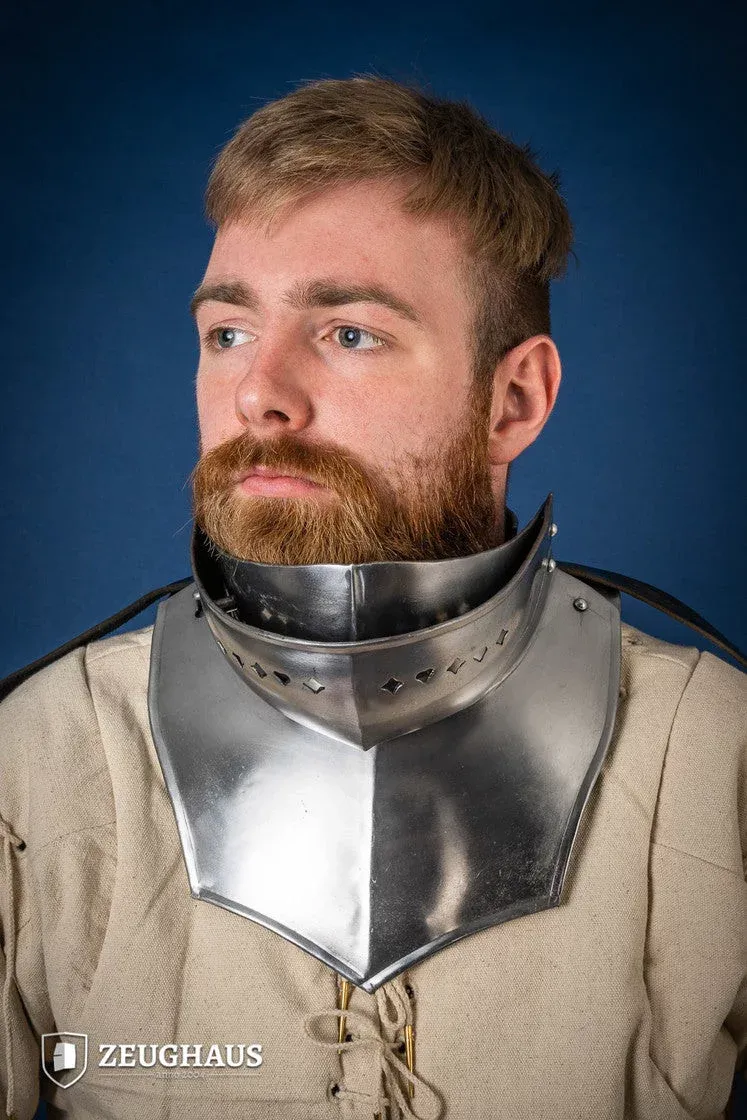What is a Bevor?
The *bevor* stands out as a key piece in the history of medieval armor. Its main function, to protect the vulnerable areas of the face and neck, was crucial at a time when close combat posed a considerable risk of receiving fatal wounds. This component, often made from a single piece of steel or iron, was placed between the helmet and the breastplate, providing essential reinforcement against enemy attacks.
Origin and Historical Evolution
Since its emergence in the 14th century, the bevor became an inseparable component of the *sallet* helmet, a type of open helmet that required additional protection for the chin and throat. As combat techniques and tactics evolved, so did the bevor, especially during the 15th century, with the development of articulated versions known as *falling buffe* in the 16th century. These innovations allowed warriors to lift or lower the protection as needed, which was essential for facilitating communication and breathing in non-combat situations.
Features and Construction
The previously mentioned component was typically made from steel blocks 1 to 2 mm thick, handcrafted to fit the wearer. Here are some of its most notable features:
- Specific Protection: It provided comprehensive coverage for the chin, throat, and sometimes the neck and part of the left shoulder.
- Compatibility: It was designed to be used with *sallet*, *close helm*, and *burgonet* helmets.
- Composition: Made with fixed or articulated pieces, held in place with straps and buckles.
- Aesthetics: It showcased a refined Gothic design, often with polished or dark finishes that reflect the aesthetics of the period.

Importance and Function in Combat
Its place in combat was undeniable, reducing the risk of injuries to the lower face and neck, which are highly vulnerable areas. However, some knights chose not to wear the bevor constantly due to the restrictions it imposed on breathing and hearing. Stories of confrontations such as the Wars of the Roses emphasize that not wearing a bevor significantly increased the risk of severe injuries.
Differences between Bevor and Gorget
Although they are easy to confuse, the *bevor* and the *gorget* differ substantially. While the gorget is designed to protect the lower neck, the bevor extends to the chin, providing greater facial coverage. There are models that combine both concepts, such as chin gorgets, which offer even broader protection.
Legacy and Current Use
Today, the bevor remains an important element for history enthusiasts, appearing in historical recreations and *reenactment* events. Modern armorers faithfully reproduce this piece, offering multiple finishes and thicknesses, adapting to the aesthetic and functional needs of contemporary users.
In its evolution from a simple fixed plate to an elaborate articulated piece, the *bevor* reflects the adaptability of medieval armor to the challenges of combat. Even today, it stands out as an object of interest, preserving the rich tradition of European armor.
















